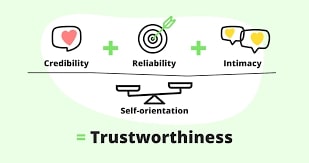In Compliance, We Trust…
In the financial world, trust is everything. Customers need to trust that their money is safe and that their Banks, Payment Settlement Agencies such as Payment Aggregators, Credit Information Companies, Wallet providers, Pre-paid Instrument Providers, Token based service providers such as networks etc.,(“here in referred as financial institutions) are acting in their best interest. Regulators (like in that of Banking, Insurance, Securities, and Payments) need to trust that financial institutions are following the rules and not taking unnecessary, uncalculated risks which are beyond the regulatory framework. And financial institutions need to trust each other to keep the system running smoothly i.e., healthy competition.
One of the ways to build trust is through regulatory compliance. Regulatory compliance means abiding by the statutes, rules, regulations, and stipulations as per the law of the land. By following the rules and regulations set forth by governing bodies, financial institutions can demonstrate their trustworthiness to all parties involved.
But, how do you measure trustworthiness?
One equation suggests that
“Trustworthiness = Credibility + Reliability + Intimacy ÷ Self-Orientation.”
Credibility refers to the expertise and knowledge of the financial institution. Are they knowledgeable about the regulations and able to comply with them?
Reliability refers to their ability to consistently follow through on their promises and meet expectations.
Intimacy refers to the level of understanding and connection between the financial institution and its customers or regulators. and;
Self-Orientation refers to the degree to which the financial institution puts its interests ahead of others.
The Trust Equation was first introduced in 2000 by author David Maister.
Financial institutions can increase their trustworthiness and build stronger relationships with customers, regulators, and other institutions by focusing on building credibility, reliability, and intimacy while minimizing self-orientation.
In this way, regulatory compliance is not just about following the rules – it’s about building trust and creating a stronger, more stable financial system for everyone.
Don’t you agree with me on this?
To illustrate further, the different components of the trustworthiness equation in the context of regulatory compliance in the financial world are as follows:
Credibility: A financial institution can demonstrate its credibility by deeply understanding the regulations and how to comply with them. For example, a bank might have a team of regulatory compliance experts who specialize in regulatory compliance and have compliance acumen to guide businesses to run effectively without disruptions and external events.
Reliability: A financial institution can demonstrate its reliability by consistently following through on its promises and meeting expectations. For example, a bank might have a strong track record of submitting accurate and timely reports to regulators, or of resolving customer complaints promptly and satisfactorily.
Intimacy: A financial institution can build intimacy by developing a deep understanding of its customers’ needs and concerns, and by being transparent and open in its communications. For example, a bank might have a dedicated customer service team that takes the time to listen to customers and address their concerns, or it might regularly publish reports on its website that explain its regulatory compliance efforts in plain language.
Self-Orientation: A financial institution can minimize its self-orientation by putting the interests of its customers and regulators ahead of its own. For example, a bank might choose to invest in additional compliance measures even if it means sacrificing short-term profits, or it might voluntarily disclose potential conflicts of interest and take steps to mitigate them.
By focusing on these four components, a financial institution can build trust with customers, regulators, and other institutions, and demonstrate its commitment to regulatory compliance.
Overall, measuring trustworthiness is a complex task that can involve multiple approaches and metrics. By focusing on key elements of trust and taking a holistic view of the situation, regulators can assess the trustworthiness of financial institutions and ensure that they are complying with regulations.
Abhishek R. Sharma
Regulatory Compliance Professional
Picture courtesy – Internet.


COMMENTS